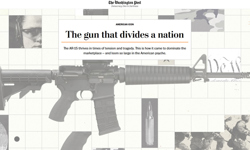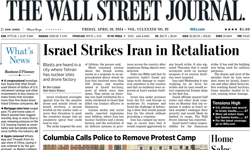Consumers interact with brands through a mixture of different media, including broadcast, print, digital, etc. So the challenge for us as marketers is to ensure that interactions through all the relevant touch-points work collectively, in harmony, to add value and deliver a great brand experience. That, in essence, is multi-channel marketing. We are all consumers ourselves so we can draw from our own experiences to take an informed view on what makes good multi-channel communications. But my guess is that most of us as consumers don’t experience that ‘wow’ factor very often, but why is that?
For the most part, marketers are more than aware of the changing media picture, yet too often we still gravitate back towards using an individual channel, or a limited selection of media which we feel comfortable with. How often do we really communicate effectively across the wider mix? In practice, multi-channel marketing is often hard to achieve. It requires a certain approach, a diverse skill-set, an integration of technology, an appropriate organisational structure and good inter-team communications to nurture it. But the rewards are an improvement in results and a lever to gain competitive advantage.
It’s been proven that when more than one medium are used in combination as part of an integrated communications plan, they work differently than when used alone. Spreading the marketing budget across channels as part of an integrated campaign tends to increase the overall effectiveness, delivering higher response and lower cost per order. This has long been proven for campaigns running across TV and magazines and it’s also true when combining one-to-one and digital media.
The halo effect
For example, we sent a direct mail piece with a subscription offer to a large group of prospects and an email with similar messaging out to another similar group. We also selected a test group who received both postal and email messages. The group who received both had a significantly higher response rate than the combination of the two individual response rates of DM and email. We call this the ‘halo’ effect of combining media.
The more we know about our customers, and also what turns prospects into new customers, the more we can do to enrich their experience and influence buyer behaviour. Gathering data through relevant touch-points should ideally feed into a technology solution which gives a single view of your customers. Even if you don’t have that, you can gain valuable insight into an individual’s channel preferences, which can help a brand to develop a more effective personalised dialogue, either through an existing channel, or indeed a new channel. But we must act responsibly and not think of this simply as data collection, but as a ‘value-exchange’. If a customer is prepared to give us some information, we should be prepared to give something valuable back. If I tell you something about myself as a customer, I have a right to expect you to use that information in a way that will help me somehow. For example, you may use it to deliver a more personalised service to suit my needs.
The planning process
Like all good business, multi-channel marketing starts with defining clear shared goals. ‘Shared’ is the key word here – those managing digital and traditional media channels must have shared objectives. Unfortunately, this is not always as easy as it sounds. As a reaction to the fast growth of digital media, many businesses created specialist teams to fast-track their digital marketing effort. These digital champions sometimes operate separately to the rest of the marketing team, and then it becomes a challenge to bring all parties together to align objectives and strategies. That challenge must be overcome. Before we can have great multi-channel communications, we need great internal communications.
Integrating your marketing communications across media requires a ‘media-neutral’ approach to planning. This involves the usual elements of marketing planning, and more:
* A deep understanding of the brand: what it stands for and what it means to consumers.
* Understanding your customers and their preferences at all the different touch-points.
* An unbiased approach to the capabilities and unique advantages of each media / discipline.
* Optimising the combinations of media through a rigorous testing programme across all the consumer touch-points.
Leaders in this area have come up with a sound process for testing and continual improvement across the various media. Jim Sterne, in his book Web Metrics, has a very simple way to illustrate the process, called TiMiTi - Try it, Measure it, Tweak it.
Evaluating buyer behaviour
A key part of the planning process is the evaluation of buyer behaviour. There are many ways to do this, but I will stick to online for the purposes of this article. Naturally, you will also need to understand buyer behaviour offline too.
Do your website visitors fit into one or more of these categories?
* The tracker – looking for something specific in a certain place.
* The hunter – knows what he wants (maybe not exactly) but is not sure where to find it, so hunts around the site to find it.
* The explorer – the typical ‘browser’, looking around for whatever may take their fancy.
As you look deeper into the ways consumers interact with your website, you can start to build up a better picture of your customer types, which we call ‘personas’. For example, I manage a website called www.greatmagazines.co.uk, the magazine subscription website of Bauer Media. Our personas can be broadly summed up as follows:
1. People with a set magazine subscription in mind. This includes those who have seen a specific offer which they are responding to. The tracker. They tend to need rapid navigation to their destination and a quick purchase path without too much distraction.
2. Consumers with a topic of interest in mind, but have not yet decided which magazine they may wish to buy. Roughly fits the ‘hunter’ profile above. They need clear direction to the right place but may also need an element of magazine choice.
3. Consumers who think a magazine subscription may be a good idea but have not chosen a specific brand, or seen a specific brand offer. The explorer. These people need to be offered choices and need help to find what they want.
4. Consumers who want to buy a subscription as a gift. We have defined these as a separate group, although they may share some attributes with the above. They need us to recognise them as a gift buyer and cater to their specific needs and those of the recipient.
5. Existing customers returning to the site for online customer services or to renew. They need to find the right place on the site quickly and to have a very good experience, which hopefully encourages them to become advocates for the site and the magazine brand.
Personas can be a very useful start point in evaluating the role of each touch-point in the customer journey. This enables you to understand the factors which can aid that journey and to identify the hurdles which can get in the way. Each persona can be further developed to bring them to life by combining with other attributes, eg. website usage, search behaviour, content consumption, use of social media, etc.
The impact of digital media on the marketing mix
It’s all too easy to treat digital media as ‘just another distribution channel’. In reality, the interactive nature of digital media enables many ways to vary the marketing mix, and this is one reason why integrated planning is so important. There are many possible uses for digital media which will impact offline and may not be immediately obvious. Have you considered these options?
Product
* Extend your product range or test new product lines online, eg. Tesco
* Narrow product range online
* Online-only products, eg. banking services
* Migrate an existing brand online
* Develop a new brand online
* Partner with an existing online brand
* Add value to your products via online solutions
Price
* Reduce the price online
* Maintain price online to avoid cannibalising your offline business
* New pricing options: rental, pay per use, reverse auctions
* Develop dynamic demand-based pricing model (eg. discount airlines)
Promotion
* Integrated marketing campaigns incorporating online tools as part of the mix
* Online-only campaigns (if appropriate)
* Enhance the brand experience - bring it to life online
Place
* Online distribution, eg. iTunes
* Disintermediation – sell direct without the middleman
* Reintermediation – partner with new intermediaries where people ‘hang-out’ online
* Countermediation – create new intermediaries or partner with existing ones
Service
* Self-service online - 24/7
* Change your service process and contact strategy to use online to best effect
* Enhance the speed of delivery, eg. email notifications
And what of technology? The CRM technology suppliers which promised to help us deliver the multi-channel dream have gone through a tough time in recent years. Several high profile CRM projects have failed to deliver. However that seems to be changing as I hear more recent software solutions have evolved to make implementation simpler and quicker, enabling the benefits of multi-channel communications to be realised for more businesses and their brands.
To conclude this article, I have chosen to pass on the wise words of Mellony Taper, brand marketing director at business solutions provider Occam: "In times like these, multi-channel isn’t an aspiration, it’s an essential. It is more targeted, more efficient and more intelligent marketing. Software empowers you to deliver the brand consistently, cost effectively and in the way your customers are more likely to respond to. If your business isn’t doing this already, then take a long hard look at why not. Is it your partners, agencies and suppliers? Is it the software you are using? Or could you structure your own business differently to ensure you are ready to catch up?"
FEATURE
Multi-channel marketing
The principles of multi-channel marketing and media-neutral planning have been around for a while. Yet, it’s still quite common for businesses to develop separate channel marketing plans which simply don’t ‘join up’. Simon Blanchard explores the benefits of multi-channel marketing and considers why it’s not as widespread as it should be.










